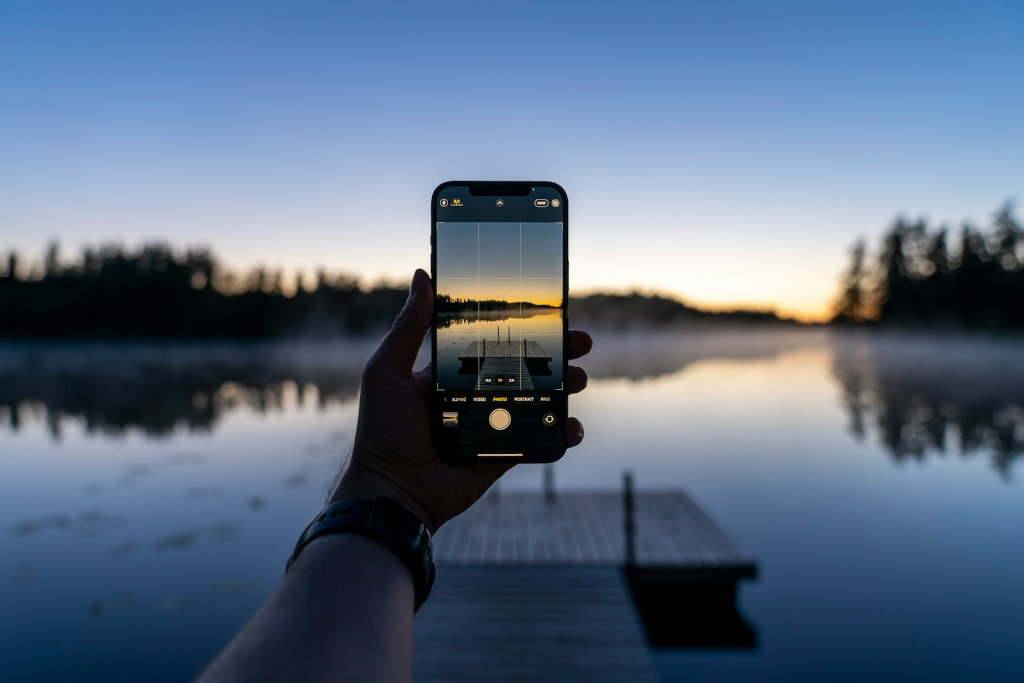Searching for Place in an Increasingly Hyper-Digital and Disembodied World
Years ago, I happened to watch a lecture recording of James Hillman talking about how the internet is not a place. I can no longer find that video but I know that the lecture was given well before online courses became ordinary. Even though a lot of the work I do happens on the internet, I agree with Hillman. I also believe that the internet is not a place. Yet, most people, including myself, find ourselves continuously involved in virtual worlds.
The internet has changed the way we relate to each other. Social media has become the norm for people of all ages to engage with other people for personal reasons, business purposes, and creative expression. Since the start of COVID-19, the time we engage in virtual communications has increased tremendously. From business meetings to family gatherings to online classrooms, much of our everyday interactions have shifted to a digital screen in front of our faces. In the last few years, the mainstream use of AI has added to the mix.
What is place? Can the internet be a place?
Certainly, a lot of “adventures” can be found on the internet. We can meet a lot of people and have great or terrible discussions. We can become so engrossed in our interactions that at an experiential level we can feel nurtured or enlivened in these interactions. But if we zoom out (no pun intended) and look at ourselves as flesh and material, we are merely sitting in our rooms staring into a glowing panel. Where is place now? Is place in the material-less internet-ether that bonds our interactions or the rooms that all these interactions take place in?
According to philosopher Tonino Griffero (2010), place has an atmospheric quality. Similar to Merleau-Ponty’s (1968) notion of the “flesh” of experiences that lives between the body in a space of elements, Griffero describes atmosphere as an in-between state between subject and object. This atmospheric entity consumes the body. Accordingly, the centre of place is with the body, where the permanent position of “here” is found, and where all else is marked relationally as beneath, behind, in front, to the right, to the left, and over there (Edward Casey, 1993).
Of course, the internet throws all this relational business off. You are “here”, at “home”, at the right place when the webpage on your browser says so. You are elsewhere when you click your mouse on a link to elsewhere. You are here in your body but also somewhere else.
The body is an important part of the traditional definition of place, but from my own studies, place is not just about bodies and directions. Place also relates to feelings of belonging. Therefore, I consider place as either a physical or emotional environment where a person or a community feels belonging and connectedness. In a place, I know without doubt that “I exist!” and I feel secure about it. Place gives me a grounded feeling. I’m not floating in space. I feel nurtured and I belong to the Earth.
With virtual interactions, we can feel nurtured and feel belonging within the groups of people we engage with. But for the most part, we cannot feel grounded through our interactions…without our bodies. So, despite my definition of place not being about material or the body, place still cannot exist when the body is not recognized as the central element.

Did we have a place to begin with?
In ecotherapy and alternative healing circles, we are told that being in nature is good for grounding. Leaning on a tree, standing barefoot on grass fields or sandy beaches, or meditating quietly attuned to the sounds of nature can get us back into our bodies where we can feel that “plunk” feeling of being tethered to the earth.
As humans, we have the need to be with nature, but “connecting” with nature, as environmentalists and advocates usually say, is the wrong description. Connecting implies a dichotomy that never fully reconciles while the unvarying truth is that we are nature. That’s why it was not surprising that people flocked to parks or sold their urban homes to move to rural areas during the height of the pandemic in North America. But growing up in a low-income immigrant family without a car (and having non-English speaking parents, for that matter) had led me to recognize that being in nature in the form of leisure and recreation was a pleasure that many people cannot have.
Even if you tell me that I can walk in a park for free or go camping with minimal funds now as an adult, I’d still not be convinced that nature in the form that capitalist societies have rendered it, can ever be equitable. So, is collective humanity doomed to be placeless since not everyone can ground themselves in a forest or a beach? Perhaps this fate is leading us to give up on physical place and belonging since we can build social empires in the virtual realm instead? And if you have truckloads of money, you can even invest in moving to Mars when our planet dies and start a new world all over again!
I don’t think so. Place can only be “here”, and surprisingly, AI can give us some insights.
How natural is our intelligence?
A while back, AI Overview (powered by generative AI) started appearing in Google searches, and ever since, I’ve been ambivalent about it. On one hand, I get quick answers to my questions at the top of the page. But on the other hand, the experience is like having an annoying know-it-all family member rushing in to tell you the truth of the world when you know you can’t completely trust them.
While many people have been concerned about AI threatening jobs and stealing artists’ creative work (more on that in another post), I have been especially intrigued by AI’s progression because it purposely resembles our thinking minds. From a productive perspective, AI is a tool. From an economic perspective, AI is a prosperous financial industry. From an environmental perspective, AI is an additional source of environmental impact on an already burdened planet. But what is AI from a spiritual perspective? This level of human evolution, in my opinion, isn’t something that a few human beings (even with a lot of money and power) can manifest. It is a co-created phenomenon at a collective level.
The symbolic part of AI that ironically stands out to me is how we call it artificial intelligence, as if we know what natural intelligence really means. AI is a mirror for our human minds, so the manifestation of AI into our reality is like witnessing our collective (un)conscious moving out from our bodies into the social technological field. Random facts, opinions from others, crisscrossing topics, ruminations of the past, projections of the future run through our stream of consciousness. Behind this messy exterior is a warehouse to a tremendous amount of information stored from the beginning of time to the infinite future ready to be called out when we want an answer to a question.
You could say that the internet and its search engines were already mimicking this warehouse of information. But now, AI sorts through the data and completes the act of discernment for us, just like how our minds do. The answers provided for us can be simple, elaborate, rational, or fantastical, but accuracy isn’t guaranteed because whatever “truth” we end up with depends on the learning input. This process mirrors what we supposedly call our natural intelligence. And yet, when we look at our human history, the traumas that past human actions have left on the world, and the violence that still continues on today, you cannot help but wonder if there is something wrong with our natural intelligence. Or perhaps, humans have not actually been using our most natural intelligence all along.

The head cannot lead
The explanation is simple, even if the intellectual mind cannot accept it: the thinking mind isn’t completely natural without the wisdom of the rest of the body (including the energetic body). When faced with complexity, the rational mind resorts to either/or thinking. Without awareness, the thoughts take over as an illusory ego-identity. That is why most spiritual traditions will advise against using the thinking mind to make important life decisions.
According to Human Design, 7/8th of the human population do not have a defined head centre. Defined centres in Human Design mean self-contained energy released from a person. Undefined centres mean a person feels and amplifies the energy from their surroundings. In the context of the head centre, this means that for most humans, our thoughts are amplifications of other people’s thoughts, projected or reflected over and over again.
Just like an AI assistant, our minds collect data to create content. Whether you interpret the output as original is dependent on your definition of originality. But if the goal is collective healing, then original means returning to nature, being grounded, and being at one with the source of life. We cannot use the data of our dysfunctional patterns to create this healed reality. The data we need transcends history and forms of intelligence that can be understood consciously. We can only receive this information through experiencing life in our fullness.
No matter how intelligent a computer becomes, how much it imitates humans, a computer cannot experience a full human life. Similarly, human beings rely on internal and external systems, but our existence cannot merely be defined as a system (or even a collection of systems). The spiritual lesson that COVID-19 has left us was the initiation of an evolutionary choice point to resolve or remain in our existential dichotomy, specifically, by choosing to return back to our bodies to rediscover our fullness, or not. Artificial intelligence is the reminder of the choice we will continuously need to make.
The split in consciousness that humanity is coming against isn’t between left or right, individualism or collectivism, or a world of technology or a world of idyllic nature. The split is the choice between being natural or remaining in a pre-programmed state of collective consciousness—a state of limited beliefs, destructive social narratives, and repressed generational and collective traumas.
And so, places are the environments that we intentionally create to help each other return to this state of naturalness, so that we can be the truest versions of ourselves, knowing that we inherently belong on Earth, authentically and securely in our bodies.
References
- Griffero, Tonino. 2010. Atmospheres: Aesthetics of Emotional Spaces. Translated by Sarah De Sanctis. Farnham, Surrey: Ashgate Publishing Limited.
- Merleau-Ponty, Maurice. 1968. The Visible and the Invisible: Followed by Working Notes. Edited by Claude Lefort. Translated by Alphonso Lingis. Evanston, Illinois: Northwestern University Press.
- Casey, Edward S. 1993. Getting Back into Place: Toward a Renewed Understanding of the Place-World. Bloomington: Indiana University Press.